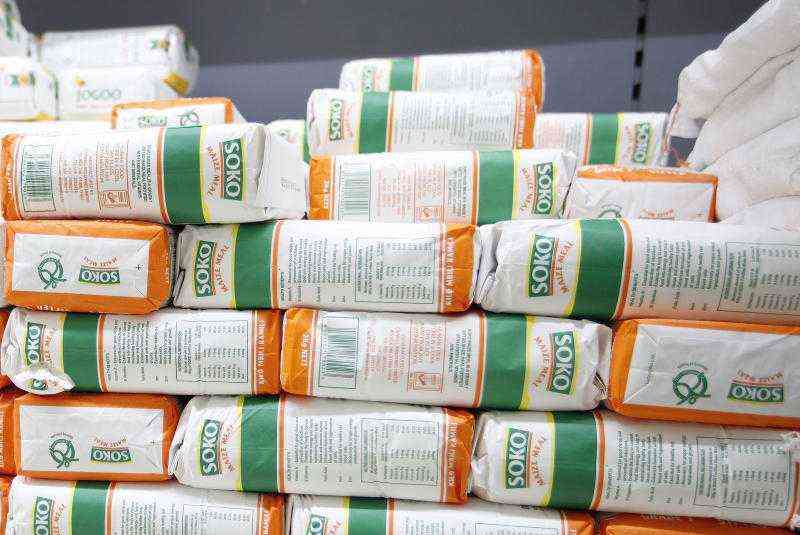By Patrick Githinji
If you have spent time visiting a retail shop in your neighborhood or a supermarket you may have noticed that there is little you can purchase with Sh1,000.
This is the challenge that many consumers are grappling with. As a team from The Standard found out, Sh1,000 cannot buy basic household items to sustain a family of four for two days.
On Wednesday, as part of an assignment we visited a supermarket located within the Central Business District to establish what Kenyans can buy with Sh1,000.
Top on the shopping list were commonly used items, which included sugar, tea leaves, maize flour, rice, onions, bread, milk, tomatoes and cooking fat. Other items were honey, yoghurt, potatoes and drinking chocolate.
Close to half of these items had to be left at the supermarket till since the money was not enough. The cost of living has almost tripled in the past eight months.
Two kilogrammes of tomatoes cost Sh161, two 600 grammes loaves of bread Sh130, four packets of milk 500ml Sh132, honey 500g jar Sh249, yoghurt Sh80 and Golden Fry cooking fat one litre at Sh230, all at a cost Sh982.
According to the Kenya National Bureau of Statistics (KNBS) the overall inflation rate stood at 17.32 per cent last month.
KNBS data further revealed that food and non alcoholic drinks’ index went up by 0.98 per cent between August and September 2011 as a result of price increases of a number of food products such as sugar, beef, bread, milk and potatoes.
Cost doubles
"The average price of a kilogramme of sugar, for instance, continued to rise from an average of Sh155.10 in August to Sh161.82 in September 2011," the data revealed.
However, between the two months, there were notable falls of 3.9, 3.1 and 3.7 per cent in the prices of carrots, maize flour and maize grains, among other food items.
Commenting on the same, Jenipher Wachie, a photographer at The Standard, concurred that the cost of living has doubled.
"Just the other day I would budget a Sh1,000 for three days, but today a thousand is for breakfast and lunch," Wachie observed.
She said she ends up buying milk, bread, blue-band, milk for her one-month-old baby as well as the house help’s lunch.
Stay informed. Subscribe to our newsletter
Wachie revealed that to adjust to the high cost of living, she has started skipping a meal a day, mostly lunch.
Moses Njagih says he would entertain friends with a thousand shillings not too long ago, but now it is impossible.
"It was a colossal amount of money (Sh1,000). I could even entertain friends with that amount but now it is hard," explains Njagih.
He says with a Sh1,000 he can only buy six bottles of Tusker Malt.
However, as majority of Kenyans seek refuge in hotels for a meal, still it is not a solution.
KNBS figures indicated that Restaurants and Hotels’ price index increased by 2.18 per cent between August and September 2011 due to continued increases in the costs of cafÈ and takeaway, restaurants and hotel foods.
For instance, a meal of ugali mboga from an ordinary hotel, which cost Sh54.67 on average in September last year, would retail at Sh68.83 in September this year. Housing, water, electricity, gas and other fuels’ index went up by 1.13 per cent during the review period.
The rise was attributed to increased cost of electricity, house rents and cooking fuels. As a result of higher fuel and foreign exchange adjustment charges, the cost of consuming 50 units of electricity, for example, varied from Sh657.50 in July to Sh695.50 in August 2011 and to Sh721 in September 2011.
 The Standard Group Plc is a
multi-media organization with investments in media platforms spanning newspaper
print operations, television, radio broadcasting, digital and online services. The
Standard Group is recognized as a leading multi-media house in Kenya with a key
influence in matters of national and international interest.
The Standard Group Plc is a
multi-media organization with investments in media platforms spanning newspaper
print operations, television, radio broadcasting, digital and online services. The
Standard Group is recognized as a leading multi-media house in Kenya with a key
influence in matters of national and international interest.
 The Standard Group Plc is a
multi-media organization with investments in media platforms spanning newspaper
print operations, television, radio broadcasting, digital and online services. The
Standard Group is recognized as a leading multi-media house in Kenya with a key
influence in matters of national and international interest.
The Standard Group Plc is a
multi-media organization with investments in media platforms spanning newspaper
print operations, television, radio broadcasting, digital and online services. The
Standard Group is recognized as a leading multi-media house in Kenya with a key
influence in matters of national and international interest.








